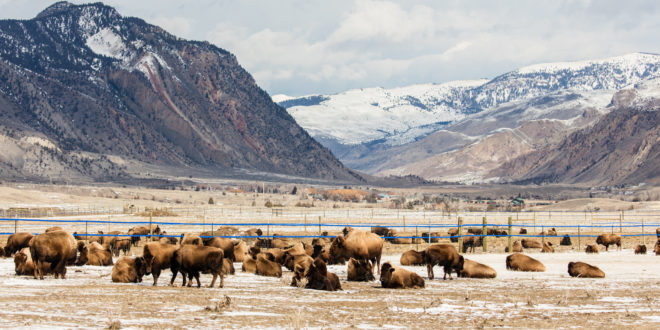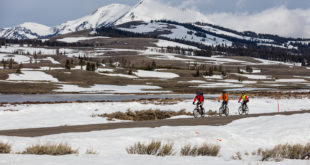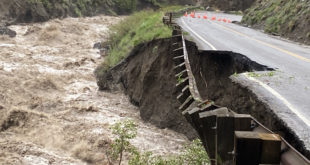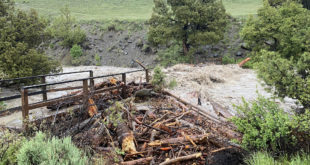Yellowstone National Park plans to increase security around Stephens Creek following a pair of bison breakouts this winter.
It is not known what measures the park will take, but officials say the incidents have changed the conversation.
Last month, 52 bison being kept in pens at Stephens Creek Bison Capture Facility were released through a cut fence. Some of the bison had been in the pen since 2016 and were promised to the Fort Peck Tribes in eastern Montana, which hopes to establish a herd on their reservation.
According to the Bozeman Daily Chronicle, those bison would likely have been transferred sometime this year, before the fence incident.
Earlier this week, fences were sabotaged for a second time, with over 70 bison escaping, although most returned to the facility through the holes in the fence. Criminal investigations have been opened into both incidents. From the Chronicle:
In an interview Friday, Yellowstone Superintendent Dan Wenk declined to offer specific details on the extra measures park officials are taking but said they are providing a higher level of security. He also said it appears they’ll have to do so into the future.
“It has just pointed out to us that we have to put a lot more funding and manpower behind securing that facility and operating that facility,” Wenk said. “And that’s what we’ll do.”
Wenk also told the Chronicle he expects quarantine will become a larger part of bison management around the Yellowstone area.
Yellowstone has proposed quarantining bison for the past few years, as an alternative to the current practice, which calls for bison to be hunted and slaughtered. Bison are managed under the Interagency Bison Management Plan for brucellosis, which the cattle industry fears could spread to their stock, since it causes cattle to abort and necessitates costly quarantine/potential liquidation.
However, there has never been a documented case of bison-to-cattle brucellosis transmission.
December 2017, the park announced it was close to having a certified quarantine facility. Indeed, Montana State Veterinarian Marty Zaluski told the Chronicle he expects the facility to become certified next week. Zaluski also called the January release an “irrevocable setback,” saying that even if those 52 bison were identified and were corralled back to Stephens Creek, they wouldn’t be seen as brucellosis-free in the eyes of livestock officials. From the Chronicle:
While many bison advocates support the idea of quarantine, some see it as the unnecessary domestication of wild animals. They also hope for a broader solution to end the slaughter of bison.
But Stephanie Adams, of the National Parks Conservation Association, said the releases “keep us stuck in this cycle of shipping all of the bison to slaughter each winter rather than looking at other alternatives.”
“If these setbacks continue to occur, we’re continuing to reduce the potential that Yellowstone bison could be used for broader conservation,” she said.
[…]
Robbie Magnan, the bison program manager for the Fort Peck Tribes, said the releases have been disappointing, but it’s far from the only setback their program has faced. Despite the setbacks, he’s still confident they’ll eventually get some bison.
“I know we’re going to get them,” Magnan said. “But when is what I can’t figure out.”
According to a Yellowstone spokeswoman, following this week’s fence incident, there are now over 350 bison in Stephens Creek. While most will be shipped to slaughter, some could be kept in quarantine.
The “broader solution” alluded to above may mean recent efforts to ensure protections for Yellowstone bison under the Endangered Species Act, as well as other litigation.
 Yellowstone Insider Your Complete Guide to America's First National Park
Yellowstone Insider Your Complete Guide to America's First National Park





